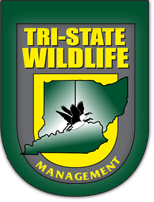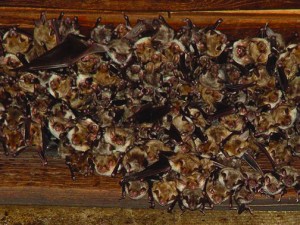Canada Goose Removal
For Professional, Ethical Canada Goose Removal Services in Ohio, call Tri-State Wildlife Management at (513) 853-0037
Ohio Canada Goose Removal: Tri-State Wildlife Management specializes in Canada goose removal, harassment, and habitat modification. Canada geese, despite their name, extend far beyond Canada, and despite their migratory instincts, not all Canada geese leave their summer home for warmer weather in the colder months. Many Canada geese can be found year-round in the tri-state area due to a comfortable lifestyle acquired from being in close proximity to people. Who needs to fly south when food and warmth are readily available in one place year-round? Residential Canada geese are considered nuisance wildlife when their unpleasant behaviors affect people.
First, to complement their migratory instinct, Canada geese are also equipped with a strong homing instinct, meaning they have an unbreakable urge to return to the area that they were hatched and raised. Without intervention, the goose population multiplies rapidly. A large population of geese then translates to large amounts of goose excrement, which is another common complaint against Canada geese. Lastly, Canada geese become very aggressive during nesting, especially males if they feel their nest is threatened.
The Tri-State Wildlife Management goose round-up team recently returned from one of their goose roundup jobs in Ohio where flocks of Canada geese were residing on the grounds of a large office complex. The customer was concerned that the geese were disruptive and messy. After Vikki’s first phone conversation with the customer, it became evident that in order to provide an effective wildlife solution, management from various other buildings in the complex must also be contacted since the Canada geese were taking advantage of multiple lakes within the industrial park. In the end, multiple buildings secured Canada goose round-up permits giving the TSWM team freedom to complete a goose roundup on any lake within the office complex. Andrew and Vikki went up to the site prior to the roundup to get a feel for the situation and to better prepare. A plan of action was created and all materials were gathered.
Towards the end of June, the TSWM goose round-up team, consisting of Vikki, Andrew, Jesse, Kevin, and Heidi, headed to the site. On the night before the roundup, the flocks were located, as they typically stay sedentary during the night. Before dawn the next morning, the team readied themselves at the first lake. Equipment was set up and everyone took their post – Andrew in the kayak, and Heidi, Kevin, and Vikki along the perimeter of the water, while Jesse operated a remote control device. Within a few short minutes, the first goose roundup was complete, and the team headed to the next lake. This time, the team strategically kept the geese from reaching the water, which sped up the process even more. Before they knew it, the second goose roundup was successfully finished. Due to the experience and expertise of the TSWM goose round-up team, the entire process, from set-up to break-down, was finished before the first arrivals to the office buildings. The team successfully completed a goose roundup in which 83 geese were secured from the site. The crew headed to Bob Evans for a hearty breakfast. All in a day’s work.










